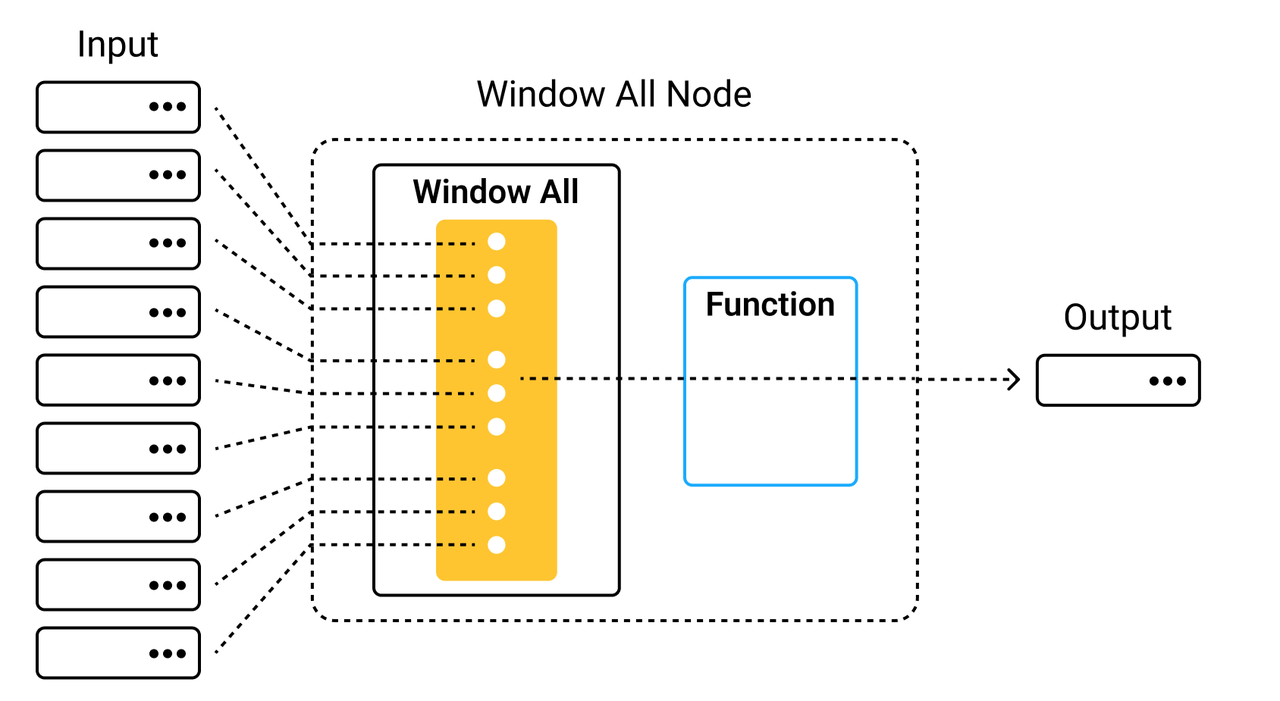Window All
Introduction
A window all node batches all input rows into one, and returns the result by applying a function to the window. Refer to window_all API for more details.

Note that the function in the window all map takes the whole window as input. So, the data type of the input is a list. Each element in the list corresponds to a row.
Example
We use the window_all(input_schema, output_schema, fn, config=None) interface to create a window all node.
Now let's take an example pipeline to demonstrate how to use a window all node. The example pipeline extracts the feature embedding of each video frame and then merges all the feature embeddings into one ndarray in NumPy.
from towhee import pipe, ops
import numpy as np
def merge_ndarray(x):
return np.concatenate(x).reshape(-1, x[0].shape[0])
video_embedding = (
pipe.input('url')
.flat_map('url', 'frame', ops.video_decode.ffmpeg())
.map('frame', 'embedding', ops.image_embedding.timm(model_name='resnet50'))
.window_all('embedding', 'video_embedding', merge_ndarray)
.output('url', 'video_embedding')
)
data = 'https://raw.githubusercontent.com/towhee-io/examples/0.7/video/reverse_video_search/tmp/Ou1w86qEr58.gif'
res = video_embedding(data)
The DAG of the video_embedding pipeline is illustrated below.

The data processing workflow of the main nodes is as follows.
- Flat map: Uses the video-decode/ffmpeg operator to decode video URLs (
url) into a list of video frames (List(towhee.types.VideoFrame)), and then flattens this list into multiple rows. Each row contains one video frame. - Map: Uses the image-embedding/timm operator to extract the feature embeddings (
embedding) of the selected frames. - Window all: Merges all the feature embeddings (
embedding) in to one window and then applies a predefinedmerge_ndarrayfunction to turn all data in the window into an ndarray (video_embeddings).
When the pipeline is running, data transformation in each node is illustrated below.
Note:
- Data in the
framecolumn are in the format oftowhee.types.VideoFrame. These data represent the decoded video frames. For easier understanding, these data are displayed as images in the following figure.- This example contains 16 video frames. Not all data are listed in the flat map node step.

Notes
- The data type of a merged window is a list. So the function applied by a window all node should support lists as input.